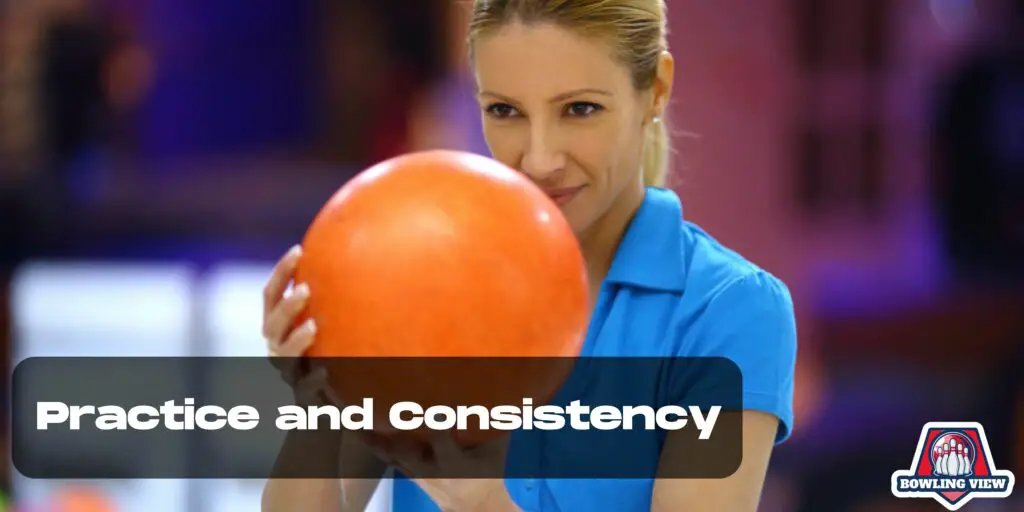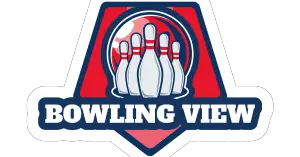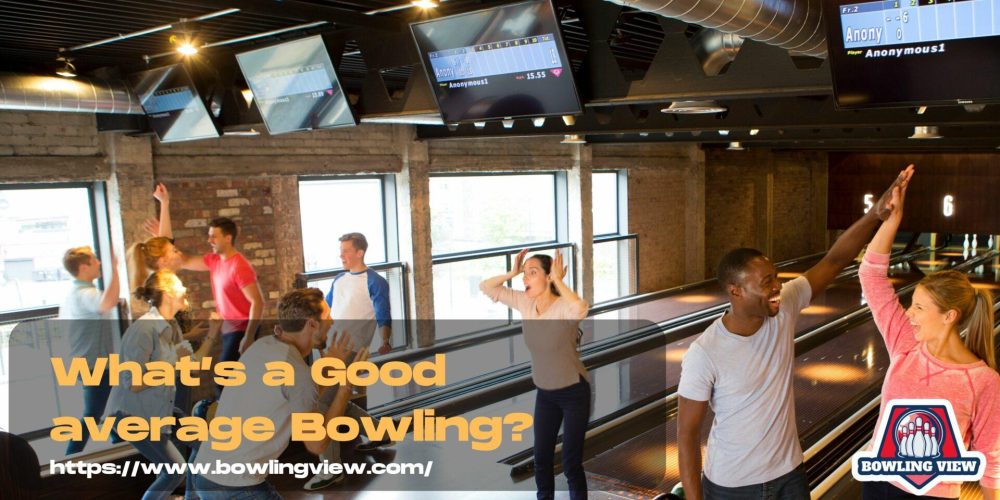Bowling is a popular sport and recreational activity enjoyed by millions of people worldwide.
While it’s a fun way to spend time with friends or family, many avid bowlers strive to improve their skills and reach higher averages. As players progress in their bowling journey, they often wonder what constitutes a good average, and how their performance compares to others.
A bowling player’s average is an important indicator of their skill level, as it’s calculated by dividing the total number of pins knocked down by the number of games played.
This statistic helps provide a snapshot of their overall performance, with some natural variation from game to game. To determine what a good average in bowling is, one can consider several factors, such as the level of competition, league standards, and personal goals.
For casual players, a good average may simply mean improvement over time and a sense of satisfaction in their performance.
However, for more competitive bowlers, a good average might be determined by comparison with others in their league or reaching higher benchmarks, such as achieving a 200 average, which signifies a level of expertise in the sport. Ultimately, a good average is subjective and depends on individual goals and context.
What is a Good Average in Bowling? Understanding Scores and Averages
Now that we have explored what constitutes a good average score, let’s dive into the mechanics of bowling scores, such as strikes, spares, and frames.
Strike
A strike occurs when a bowler knocks down all ten pins with their first throw in a frame. In bowling, a strike is denoted by an “X” on the score sheet. The score for a strike is ten points plus the total number of pins knocked down on the next two throws.
Spare
A spare is scored when a bowler knocks down all ten pins within two throws in a frame. It is denoted by a “/” on the score sheet. The score for a spare is ten points plus the number of pins knocked down on the next throw.
Frames
A standard game of bowling consists of ten frames. In each frame, a bowler is allowed a maximum of two throws to knock down all ten pins. The total score is calculated by adding the number of points from each frame.
| Frame | Throw 1 | Throw 2 | Frame Score |
|---|---|---|---|
| 1 | 6 | 3 | 9 |
| 2 | 8 | / | 18 |
| 3 | X | 44 |
Another interesting read> What Is A Closed Frame In Bowling?
Maximum Score
The maximum score in a game of bowling is 300, achieved by bowling a perfect game. This is accomplished by scoring a strike in each frame, including the first ten frames and the two bonus throws in the tenth frame.
Perfect Game
A perfect game in bowling is when a bowler scores 12 consecutive strikes in a row in a single game, resulting in a score of 300. This is a rare and impressive achievement that showcases the skill and accuracy of the bowler. Watch a video of a perfect game.
Factors Affecting Bowling Averages
While understanding the scoring system is crucial, various factors can affect a player’s average score. Let’s explore some of these key influences.
Age:
Age can play a significant role in determining a bowler’s average score. Generally, as one gains experience and develops their skills, their bowling average improves. Younger players may have lower averages due to lack of experience, while seniors may see a decline in their average scores due to physical limitations.
Skill Level:
A bowler’s skill level greatly impacts their average bowling score.
Beginners will typically have lower averages, while experienced players will see higher averages. This can be attributed to refined techniques, a better understanding of lane conditions, and a solid mental game.
Equipment:
Having the right equipment can greatly affect a bowler’s average score. Key components include:
- Bowling balls: Choosing the right ball weight, coverstock, and drilling pattern can significantly influence a player’s performance.
- Shoes: Properly fitted shoes with the appropriate slide sole can enhance a bowler’s approach and delivery.
Investing in high-quality equipment tailored to a player’s specific needs can lead to improved scores. This also enhances the overall experience on the lanes.
Lane Conditions:
Lane conditions play a crucial role in determining a bowler’s average score. Factors such as oil patterns, lane surface, and temperature can affect ball motion and overall scoring potential. Adapting to these variables and making adjustments is vital for achieving a higher bowling average.
Types of Players and What Constitutes a Good Average in Bowling: Comparing Professionals and Leagues
Different levels of experience and commitment to the game result in diverse bowling averages. Here’s a detailed breakdown of what you can expect at different stages of your bowling journey.
Beginner Bowlers:
For beginner bowlers, expectations for average scores are often lower. A good bowling average for someone new to the game typically falls in the 80-100 range. At this stage, the focus should primarily be on fundamentals like proper form, balance, and targeting consistency. Beginner bowlers should not feel discouraged by their scores, as improvement often comes with practice and experience.
Intermediate Bowlers:
As bowlers gain more experience, their skills will progress and their average scores are likely to increase. Intermediate bowlers often have a good grasp of the basics and are refining their techniques for more precision. A good bowling average for intermediate players is usually in the 130-150 range. At this level, bowlers often begin to develop a consistent style and may start participating in local and regional competitions.
League Bowlers:
League bowlers are more serious about their game and usually belong to a bowling league or club. Their focus on improving their skills and performance leads to higher average scores. A good bowling average for league bowlers ranges from 170-190. These players often invest in customized equipment, take part in regular practice sessions, and may receive training from experienced coaches.
Professional Bowlers:
Professional bowlers represent the highest echelon of skill and performance in the sport. As such, a good average for a pro bowler is considerably higher than for other categories of players. A professional bowler’s average score typically falls within the 200-230 range. These elite players dedicate a significant amount of time to practice and honing their skills, often competing in national and international tournaments.
In summary, a good bowling average ranges from 80-100 for beginners, 130-150 for intermediate players, 170-190 for league bowlers and 200-230 for professional bowlers. Each level represents a different stage in skill development, with consistent practice and dedication being the key to improved performance.
Improving Your Bowling Average
Are you looking to elevate your game? Here’s a guide to techniques and practices that can help you boost your average bowling score.
Practice and Consistency:
To improve your bowling average, it is vital to invest time in practice and maintain consistency in your gameplay. Practicing consistently helps in refining your skills and solidifying your technique.

Establishing a practice routine enables you to break down and analyze your game, identify areas for improvement, and enhance your overall performance.
Technique and Approach:
Focusing on your technique and approach is another essential aspect of improving your bowling score. Having a stable, controlled starting position and a smooth release will ensure that your ball follows its intended path consistently. It is crucial to work on:
- Footwork: Maintaining steady, even steps and proper balance throughout the approach.
- Timing: Syncing your arm swing with your footwork for optimized coordination and accuracy.
- Release: Develop a consistent release by working on your hand position, grip strength, and release point.
Control and Speed:
Control and speed are two key factors that significantly impact your bowling performance. Achieving the right balance between control and speed can help you generate the desired ball trajectory, resulting in more accurate shots and higher scores. Consider:
- Ball selection: Choosing a ball with the appropriate weight and fit for your hand, which yields better control and higher speed.
- Adjustment: Adapting your shots to your preferred speed while maintaining control, especially as lane conditions change throughout the game.
Joining a Bowling League:
Participating in a bowling league or league play provides additional opportunities for improvement. In a league setting, you’ll be exposed to players with different skill levels and styles, enabling you to learn from their techniques and experiences.
Additionally, league play encourages regular practice and provides access to coaching and feedback from teammates, contributing to the enhancement of your bowling prowess.
Achievable Bowling Goals
Setting realistic and personalized goals is key to progress and enjoyment in bowling. Here’s how to align your targets with your age, experience, and competition level.
Age and Experience
When setting bowling goals, it is essential to consider a player’s age and experience. For example, children and beginners, a good average score to aim for is between 100 and 140. As players develop their skills, they can gradually increase this target. More experienced adult players typically aim for an average score of 180 to 200, while professional players strive for an average of 210 or higher.
- Children and beginners: 100-140
- Adult, experienced: 180-200
- Professional player: 210+
Competitions and Tournaments
Achievable bowling goals should also take into account the context of competitions and tournaments. In recreational leagues or casual play, these average scores should provide a strong foundation for enjoyable and engaging gameplay.
However, when participating in tournaments, players often face a higher level of competition. In such cases, a useful goal is to consistently improve one’s average score game by game.
| Context | Average Score Goals |
|---|---|
| Recreational leagues | 100-140, 180-200 |
| Casual play | 100-140, 180-200 |
| Tournaments | 210+ |
In conclusion, setting achievable bowling goals depends on various factors such as age, experience, and the context in which one plays. Bowlers can continue to enjoy the game while enhancing their performance by setting realistic targets and focusing on consistent improvement. Check out this guide for more advanced techniques.
FAQs
Do you have questions about bowling goals and how to improve your performance? Look no further, as this FAQ will provide answers to all your queries.
A: A good average in bowling depends on various factors. For a beginner, an average score of 120-140 is considered decent, while for competitive players, an average score of 175-220 is considered good.
A: The average bowling score is calculated by adding up the total pins knocked down in all games played and dividing it by the total number of games played.
A: While it is technically possible for anyone to bowl a 299 or a perfect score of 300, it’s very unlikely for beginners to achieve this feat.
A: A good score in bowling depends on the skill level of the player.
For a beginner, a score of 120-140 is considered decent, while for competitive players, an average score of 175-220 is considered good.
A: Improving your bowling score requires a combination of regular practice, proper technique, and mental focus. Some tips for improving your score include keeping a consistent approach, maintaining good balance, and focusing on your target.
A: The average bowling score by age varies depending on the age group and skill level. However, according to some sources, the average score for a beginner bowler of any age is around 120-140, while for competitive players, the average score ranges from 175-220.
A: Some tips for a beginner to improve their bowling score include keeping a consistent approach, maintaining good balance, and focusing on their target. Beginner bowlers should also practice regularly and work on improving their technique and mental focus.
A: If you want to play at a professional level, you should aim for a high score of around 240-250 or higher.
However, this score is only achievable with consistent practice, proper technique, and mental focus.
A: While there is no set number of strikes in a row required to achieve a high score in bowling, getting as many strikes in a row as possible increases your chances of getting a high score.
A: A score of around 120-140 is considered decent in bowling for a beginner.
However, for competitive players, a score of 175-220 is considered good.


